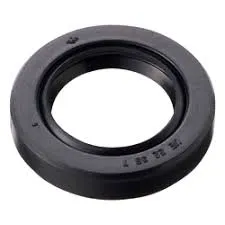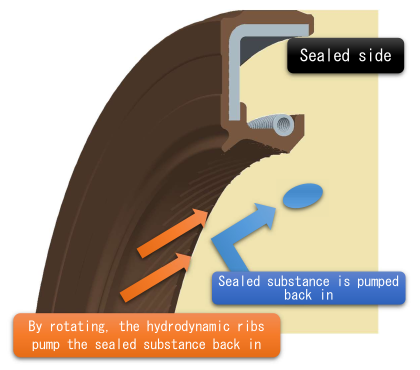Oil seals, also known as rotary shaft seals, are designed to prevent oil leaks in rotating machinery by sealing the gap between a rotating shaft and a stationary housing. Proper installation of oil seals is essential to ensure a leak-free performance, which in turn helps to extend the life of the machinery. In this article, we will go over the steps for installing oil seals correctly.
- In the intricate world of engineering and manufacturing, a seemingly insignificant component holds a significant role - the U-shaped rubber gasket. This humble piece, often overlooked, is an indispensable element in various industries, from automotive to plumbing, electronics, and even aerospace.
- Moreover, the trend towards sustainability has influenced gasket automation. Modern systems are designed to minimize energy consumption and reduce waste. Recycling mechanisms and environmentally friendly materials processing add another layer of innovation to this evolving field.
MH: O.D. wall is a rubber material
HM: O.D. wall is a metal case
MH(S)H: O.D. wall is metal with a reinforced inner metal case
Oil seal size
Oil or other seals can be used for grease and oil seals. A flexible lip, radial lip, or rotating shaft seal are different names for an oil seal. Single lip, double lip, triple lip, and four or more lips are frequent configurations. Double dust lip seal A seal with a garter spring design is the Double Dust Lip (DDL) seal. It has two dust lips, as the name would imply, plus a fluid lip with a garter spring to keep the lip firmly attached to the wear ring. Given the ongoing evolution of bearing seal designs, this seal would be considered a starting seal. For more than 50 years, this design has been the workhorse of the freight business; it still is in some regions. NBC Brenco Bearing Seal performs the fundamental task of keeping contaminants and grease out. Because of the garter spring, this seal would add the most torque and temperature to the bearing. Efficiency plus bearing seals Due to eliminating the fluid lip using poly inserts and rotors, the Efficiency Plus (EP) seal has a reduced torque value of fewer than 15 in-lbs. Although it features a triple dust lip rather than a double dust lip, the dust lip is still a molded component of the design. A labyrinth-like insert and rotor interlock each other to replace the fluid lip. NBC Brenco labyrinth provides excellent grease while lowering the torque required to rotate the seal. Other types of oil seal and grease seals include:
How to Choose the Right Oil Seal
2) Oil seals for steel production equipment
Standard 3760/3761
-15 °C to + 180 °C
 40x52x7 oil seal. It is often employed around rotating shafts in engines, pumps, gearboxes, and other mechanical systems, safeguarding the lubrication system and prolonging the lifespan of the equipment.
40x52x7 oil seal. It is often employed around rotating shafts in engines, pumps, gearboxes, and other mechanical systems, safeguarding the lubrication system and prolonging the lifespan of the equipment.There are several materials used to manufacture oil seals. They are discussed below.

silicone rubber gasket. This resistance makes them suitable for use in industries where exposure to harsh chemicals is common, such as in the chemical processing, pharmaceutical, and food and beverage industries. The inert nature of silicone rubber also prevents it from reacting with the substances it comes into contact with, ensuring a long-lasting and reliable seal.
The company manufactures its line of cartridge assembly seals for industrial pumps, agitators, reactors, and Industrial Compressor Seals. They also specialize in mechanical seals emergency repair services 24/7 to minimize industrial downtime.

